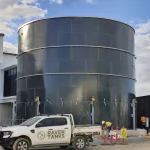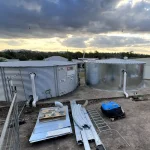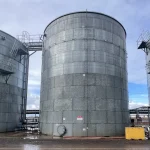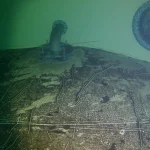Fire water tanks are a critical component of any fire protection system. Whether installed in industrial, commercial, or rural settings, their performance in emergencies depends heavily on regular maintenance and timely repairs. To ensure long-term reliability and compliance with Australian Standards (like AS1851 and AS2304), owners and facility managers must follow best practices in inspecting, cleaning, and restoring fire tanks.
Why Fire Tank Maintenance Matters
A neglected fire water tank can lead to corrosion, contamination, sediment buildup, or leaks—all of which can reduce water pressure or availability when it’s needed most. More importantly, failure to maintain your fire tank may result in non-compliance with legal requirements and increased risk during fire events.
Key risks of poor maintenance:
- Blocked inlets or outlets.
- Corrosion or rust on inner surfaces.
- Compromised fire pump performance.
- Reduced tank capacity due to sludge.
- Failed inspections or safety audits.
Common Fire Water Tank Repairs
Over time, even galvanized or stainless steel fire tanks may require repairs due to wear and tear. Common repair services include:
- Crack and leak sealing in concrete or steel tanks.
- Internal lining replacement for potable and fire tanks.
- Flange and outlet gasket repair.
- Corrosion treatment and recoating.
- Structural panel or roof replacement in panel-type tanks.
These repairs must often be carried out in confined spaces, requiring certified personnel under AS2865 safety standards.
Inspection & Testing According to AS1851
Australian Standard AS1851:2012 mandates routine inspections and maintenance for fire protection systems, including:
- Monthly visual inspections.
- Annual full tank inspections (including internal surfaces, float valves, and hatches).
- Five-yearly structural integrity checks.
- Hydrostatic pressure testing where applicable.
Proper record-keeping of inspection logs and any corrective actions is essential for compliance.
Best Practices for Fire Water Tank Maintenance
To ensure compliance and longevity:
- Schedule regular inspections – Engage certified technicians to assess internal and external tank conditions.
- Clean sediment and debris – Use vacuum pumps or confined-space entry techniques for sludge removal.
- Check connections and pipework – Ensure all inlet/outlet valves, hydrants, and booster connections are functioning.
- Apply protective coatings – Recoating internal surfaces prevents corrosion and extends tank life.
- Monitor water levels and leakage – Install alarms or sensors to detect abnormalities early.

Confined Space Safety During Repairs
Many fire tanks require entry into confined spaces for cleaning or internal repairs. This must be done under strict safety procedures, including:
- Gas detection and atmospheric testing.
- Standby rescue personnel.
- Ventilation and lighting provisions.
- Permits and hazard assessments.
Companies performing these tasks must comply with Safe Work Australia and AS2865 requirements.
Conclusion
Proper fire tank maintenance and repair isn’t just about ticking compliance boxes—it’s about ensuring water is available when lives and property are on the line. By staying aligned with Australian Standards and working with certified tank professionals, you can extend the lifespan of your system and maintain peace of mind.
Ready to schedule your next fire tank inspection or repair? Contact our certified team today for a comprehensive service plan.










